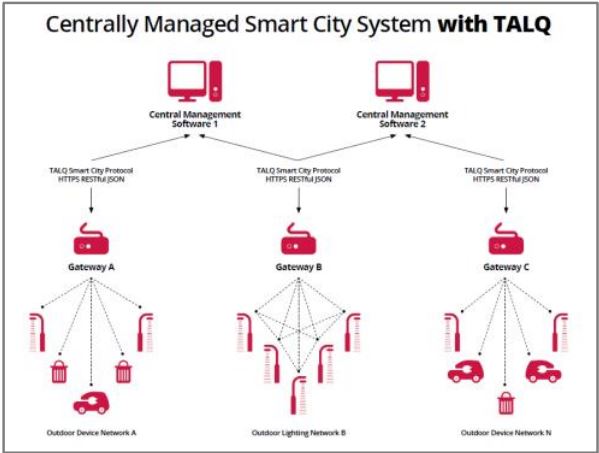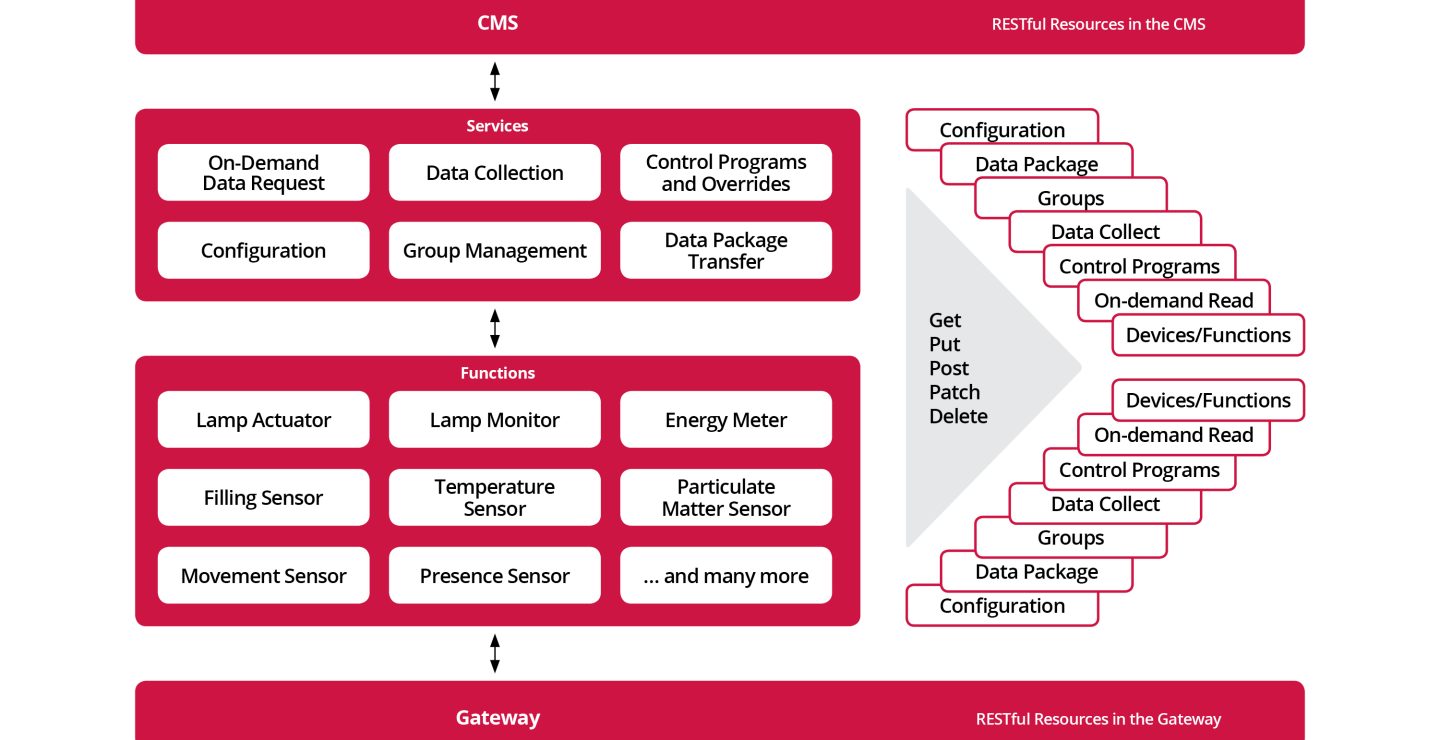New protocol standard for future-proof smart city applications
Piscataway, NJ, USA / Frankfurt, Germany – March 16, 2018 – The TALQ Consortium, which has developed a global interface standard and certification scheme for managing outdoor lighting networks, will shortly introduce TALQ version 2.0, an easy to integrate RESTful/JSON protocol that addresses many smart city applications.
The updated technical specification particularizes a state-of-the-art definition of the Smart City Protocol and provides manufacturers full flexibility to define their own devices and functionality as needed. Furthermore TALQ version 2.0 guarantees cities and municipalities broad interoperability of various smart city applications from different vendors.

Cities across the world on their way to becoming smart cities face the same challenges: advanced smart lighting, waste management, parking, traffic control and many other services that strive to save energy, reduce traffic, increase security, quality of life and much more. But currently, most of the available solutions are proprietary, locking cities into single vendor solutions.
Thanks to the TALQ Smart City Protocol, cities will be able to choose and adopt solutions from multiple vendors and control them all through a single Central Management System (CMS). The smart City Protocol, TALQ version 2.0, is an application interface to exchange data, commands and programs between one or more CMS and Outdoor Device Networks (ODNs) from different vendors to enable configuration, control, command and monitoring of connected devices in the city.
More Flexibility by getting RESTful
With its updated protocol – which will be published in summer 2018 – TALQ defines the message types, data format, parameters and behavior of CMS and
Gateways. In doing so, TALQ does not limit the types of network implementations in the ODN itself, but specifies the interface between the ODN’s interface (Gateway) and the CMS. The new version 2.0 is based on a bidirectional RESTful API with JSON-LD data payload that relies on underlying standardized data transport, network and security services such as HTTP, TLS, TCP and IP, to establish communication between CMS and Gateways.
The standard RESTful approach, adopted by TALQ, makes integration easy for manufacturers of smart city applications in existing CMS and Gateways. To provide configuration, control, command and monitoring services, the TALQ Smart City Protocol supports HTTP REST GET, PUT, POST, PATCH and DELETE requests on REST resources such as devices and services. Thanks to TALQ version 2.0, getting log values (e.g. temperature, voltage, current, energy) from devices, reading real time values from a device, sending configuration parameters to a device or remote controlling it, becomes obvious for CMS software developers.
Our clear goal is to make it easy for cities to connect any smart city device to their CMS, so that any data produced is stored and displayed and can be used in any other Smart City processes and applications.
explains Simon Dunkley, Secretary General of the TALQ Consortium.
By implementing TALQ, vendors are completely free to describe their enddevices through TALQ Functions (i.e. sets of agreed attributes and events) which can easily be configured, controlled and monitored using TALQ services (configuration, data collect, real time control, on-demand read, scheduled control, etc.). In that way, TALQ fosters competition and allows cities to choose among multiple different solutions whilst assuring compatibility of all different systems.


